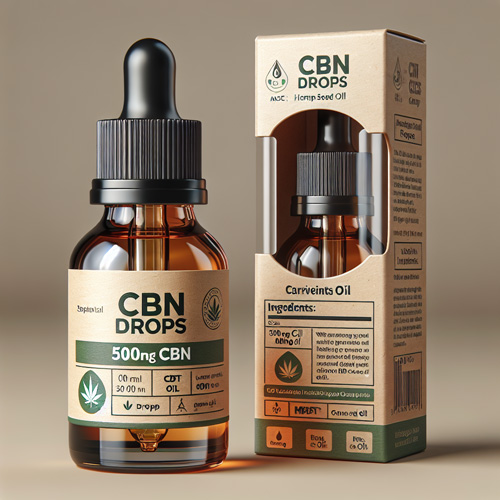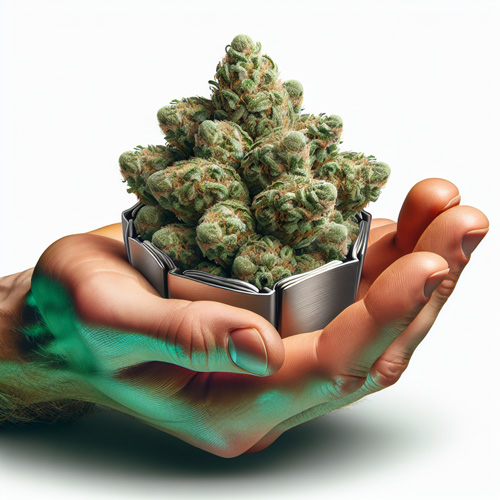
Ancient Uses of Hemp
History of Hemp Use
Hemp has a long and fascinating history dating back thousands of years. This versatile plant has been used by ancient civilizations for various purposes, including its seeds, fibers, and medicinal qualities.
Throughout history, hemp has been used to produce paper, fabric, building materials, and even sails, making it an incredibly valuable resource. The cultivation of hemp became especially prominent in the 19th and 20th centuries, with countries like the United States and Canada leading in its production.
Notably, industrial hemp played a crucial role in naval fleets, where it was used to make sails and ropes. The therapeutic benefits of hemp were also recognized by ancient cultures, with recorded use dating back to ancient India, where it was known as “Indian hemp.” In the 18th and 19th centuries, hemp’s active ingredients were thoroughly studied by researchers such as William Brooke O’Shaughnessy and Greek historian Herodotus. Today, hemp is experiencing a resurgence as its numerous uses and sustainable qualities are rediscovered by modern societies.
Early Uses of Hemp
Hemp, derived from the Cannabis plant, has a rich history that stretches back thousands of years. Believed to have originated in Asia, hemp was cultivated by ancient civilizations primarily for its versatile textile properties. These early civilizations recognized the strength and durability of hemp fibers, making it an ideal material for making clothing, ropes, and other textiles.
Hemp’s significance extends beyond its use as a textile. Ancient Chinese texts reveal that hemp was also valued for its medicinal properties. The Chinese recognized the therapeutic effects of hemp, using it to treat various ailments and promote overall wellness.
Hemp remains have been found in different regions, including India, where historical texts mention the use of hemp for fabric production. Hemp has also been discovered in archaeological sites in Thailand and Malaysia, highlighting its widespread cultivation and utilization in ancient societies.
Hemp played a crucial role in the expansion of empires and voyages of discovery. Naval fleets in the past relied heavily on hemp sails due to their strength and resistance to the elements. This reliance on hemp contributed to the success of numerous exploratory expeditions and the establishment of vast empires.
In conclusion, hemp’s early uses centered around its cultivation for textiles, its medicinal properties, and its significance in the expansion of empires. As a resilient and versatile natural material, hemp has left a lasting impact on ancient civilizations and continues to be valued in various industries today.
Ancient Greece and the Hemp Plant
The hemp plant held great significance in ancient Greece, both in terms of its practical uses and its cultural importance. Greeks utilized hemp for various purposes, recognizing its versatility and benefits.
The ancient Greeks valued hemp for its fiber, which they used to make clothing, ropes, and sails for their ships. Hemp fabric was highly favored due to its durability and flexibility, making it an ideal material for everyday wear and maritime exploration.
Beyond its utilitarian uses, hemp also had cultural significance in ancient Greek society. It was mentioned in several notable works of literature, such as the writings of Greek historian Herodotus. In his accounts, Herodotus described the Greeks’ use of hemp in the construction of their ships and the cultivation of hemp as an agricultural crop. These references indicate the integral role hemp played in the daily life and industries of ancient Greece.
The ancient Greeks recognized the value of the hemp plant and its numerous applications. From textile production to maritime endeavors, hemp was deeply intertwined with ancient Greek culture and its advancements in various industries.
The Role of Hemp in Ancient Civilizations
Hemp played a significant role in ancient civilizations, serving as a versatile and valuable resource. Its fibers were widely used in the production of textiles, creating durable and comfortable clothing. The cultivation and harvesting of hemp provided a sustainable source of food, as the seeds were rich in nutrients and could be ground into flour or pressed for oil.
In addition to its practical uses, hemp held spiritual and ritualistic importance in many cultures. Mesopotamians used hemp in their religious ceremonies, believing it had the power to connect them to the divine. The ancient Egyptians also incorporated hemp into their rituals, using it to create incense and as an offering to their gods.
Hemp cultivation and utilization were prevalent in ancient China as well. Chinese farmers cultivated this versatile crop for its fiber, used in the production of clothing, paper, and even armor. Hemp seeds were also valued for their nutritional benefits and were commonly used in traditional Chinese medicine.
Across Europe, hemp was widely cultivated and utilized during ancient times. Its fibers were used for making ropes, sails, and building materials. The production of hemp was encouraged by rulers such as Henry VIII in England, who mandated the cultivation of hemp to support the naval fleets.
Overall, hemp played a multifaceted role in the societies of ancient civilizations. Its fibers provided essential materials for textiles, ropes, and building structures, while its seeds offered nutrition and culinary options. Additionally, hemp held spiritual significance and was often used in religious ceremonies. Through its cultivation and utilization, this versatile plant played a vital role in various aspects of daily life in ancient civilizations.
Hemp In Europe
Hemp has a rich history in Europe, where it was widely cultivated and utilized for its versatile properties. From hemp fibre production to building materials, this ancient crop played a significant role in various aspects of European life. Rulers like Henry VIII even mandated its cultivation to support naval fleets. In this article, we will explore the diverse uses of hemp in Europe, its cultural and economic importance, and how it shaped the continent’s history.
Henry VIII and the Royal Decree on Hemp Production
In the 16th century, Henry VIII, the renowned English monarch, issued a royal decree that had a significant impact on the history of hemp use. In 1533, he ordered farmers throughout England to cultivate hemp, recognizing its value in various applications.
Henry VIII’s decree prompted a surge in hemp production, as it became a crucial raw material for numerous industries during that time. The strong and versatile fibers of the hemp plant were primarily utilized in the production of fabric, making it an essential textile in the 16th century.
The decree served not only to encourage the cultivation of hemp but also to establish it as a key industry within the kingdom. The hemp industry became a vital component of the economy, providing raw materials for everything from clothing to building materials.
This royal decree from Henry VIII marked a turning point in the cultivation and utilization of hemp, driving its prominence in England and beyond. It laid the foundation for the extensive use of hemp throughout the centuries, demonstrating the ancient recognition of its myriad applications.
William Brooke O’Shaughnessy and His Contributions to Early Cannabis Research
William Brooke O’Shaughnessy was a renowned figure in early cannabis research and played a significant role in introducing the medicinal use of cannabis to Europe. O’Shaughnessy’s interactions with Muslim and Indian cultures greatly influenced his understanding of cannabis and its therapeutic properties.
During his time in India, O’Shaughnessy observed the use of cannabis for medicinal purposes by local practitioners. This exposure allowed him to recognize the potential benefits of cannabis and sparked his interest in conducting further research. He conducted extensive studies on the plant, exploring its active ingredients and their effects on the human body.
O’Shaughnessy’s research revealed the analgesic and anti-inflammatory properties of cannabis, showcasing its potential as a valuable medicinal substance. He published his findings in numerous scientific journals, which generated great interest and curiosity in Europe. As a result, O’Shaughnessy is often credited with popularizing the medicinal use of cannabis in the Western world.
By introducing and highlighting the therapeutic potential of cannabis, O’Shaughnessy paved the way for further research in this field and contributed to the development of modern medicine.
His work had a lasting impact on the perception and understanding of cannabis, particularly its analgesic effects, and his contributions continue to shape the evolving landscape of medicinal cannabis use in Europe and around the world.
INDUSTRIAL USES OF HEMP IN THE 19TH CENTURY
During the 19th century, hemp was widely utilized for its various industrial uses. The fibers of the industrial hemp plant were used to create strong and durable materials, such as fabric and building materials.
Industrial hemp was also a valuable source of raw materials for industries such as paper production. The cultivation of hemp became a major agricultural crop in many regions, including the United States, where it became a cash crop and played a significant role in the economy. Hemp production was particularly important for the manufacturing of sails and ropes, making it crucial for naval fleets and maritime trade. The versatility and practicality of hemp made it a staple in various industries during the 19th century and contributed to its continued commercial production.
Raw Materials Derived from Hemp Plants
Hemp plants have been cultivated for thousands of years, providing ancient civilizations with a plethora of raw materials. These versatile plants were prized for their fibers, oils, and seeds, which served a variety of purposes across various industries.
Hemp fibers were particularly valued by ancient civilizations for their strength and durability. These plant fibers were used to create textiles, ropes, and paper. The Greeks, for example, utilized hemp fibers to produce high-quality sails for their naval fleets. Additionally, hemp fiber was employed by the Egyptians to craft sturdy and long-lasting building materials.
Another valuable raw material derived from female hemp plants is hemp oil. This oil is derived from the seed production and possesses a range of beneficial properties. In ancient times, hemp oil was used for medicinal purposes, known for its potential as an anti-inflammatory and pain reliever. It was also utilized in skincare products and as a lubricant for machinery.
Hemp seeds themselves have long been recognized as a nutrient-rich food source. Ancient civilizations, such as the Chinese and Indians, incorporated hemp seeds into their diets due to their high protein content and essential fatty acids.
The utilization of raw materials derived from hemp plants by ancient civilizations demonstrates the long-standing historical significance of hemp as a versatile and sustainable resource. From textiles to medicine, hemp provided societies with essential materials that continue to be utilized and appreciated today.
Hemp Used as a Building Material in the 19th Century
In the 19th century, hemp was widely used as a building material due to its versatility and numerous benefits. This sustainable plant fiber was utilized to construct a variety of structures, from simple dwellings to grand buildings.
Hemp was primarily used to create a material known as “hempcrete,” which is a mixture of hemp fibers, lime, and water. This mixture was then used to construct walls, floors, and roofs. Notable examples of buildings made from hemp include the Le Pain de Sucre tower in France and the Dunster Castle in England.
One of the key advantages of using hemp as a building material is its sustainability. Hemp plants grow rapidly and require minimal water and pesticides, making them an environmentally friendly choice. Additionally, hempcrete is biodegradable and has a low carbon footprint.
Hemp structures are also known for their durability. Hemp fibers have high tensile strength, making them resistant to cracking and crumbling. This, coupled with the fact that hempcrete is resistant to mold and pests, ensures that hemp buildings can stand the test of time.
Furthermore, hemp provides excellent insulation properties. Hempcrete has a high thermal mass, meaning it can absorb and store heat, helping to regulate temperatures and reduce energy consumption.
Overall, the use of hemp as a building material in the 19th century and its continued utilization today showcases its many benefits in sustainable construction. Its versatility, durability, and insulation properties highlight why hemp has become an increasingly popular choice for eco-friendly builders.
Fabric and Textiles Made from Hemp in the 19th Century
In the 19th century, hemp fabric and textiles played a significant role in various industries. Hemp fibers were known for their strength and durability, making them an ideal material for clothing, hats, shoes, and robes.
Hemp fabric was highly regarded for its resilience and resistance to wear and tear. Its long fibers made it sturdy and capable of withstanding repeated use and frequent washing. This durability made hemp clothing a popular choice for individuals who needed their garments to endure harsh conditions.
Hemp fabric was also valued for its versatility. It could be woven into a variety of textures, from coarse and heavy canvas used for workwear, to lightweight and breathable fabrics used for summer clothing. Hemp’s natural ability to wick moisture away from the body made it an excellent choice for hot climates.
The historical significance of hemp fabric cannot be understated. In the American colonies, hemp was a crucial textile crop. It was used extensively in the production of sails for naval fleets and as a material for clothing and household items. Notably, hemp fabric was also used for making the first American flag.
Hemp fabric and textiles were widely used in the 19th century for their strength, durability, and versatility. The historical significance of hemp fabric is evident in its role in the American colonies and its use in creating iconic symbols like the first American flag.
20TH-CENTURY USES OF HEMP
In the 20th century, the uses of hemp expanded beyond fabric and textiles. With the rapid advancements in technology and growing awareness of its potential, hemp became a valuable resource for multiple industries.
Recognizing its versatility, hemp was utilized in the production of building materials, paper, and even as a source of raw materials for various products. Hemp’s fiber production and cultivating properties also made it an attractive option for farmers looking for a profitable cash crop. However, as the century progressed, the perception and legal status of hemp changed, leading to a decline in its production and use.
Nevertheless, the 20th century marked a significant period in hemp’s history, demonstrating its potential as an invaluable resource in various industries.
Industrialization of Hemp Production
In the 20th century, the industrialization of hemp production brought about a remarkable expansion of hemp cultivation worldwide. This period saw a significant increase in the acreage dedicated to growing hemp crops, as it transformed into a cash crop and played a vital role in several industries.
The commercial production of hemp became a prominent aspect of agriculture during this time. With the recognition of the numerous uses of hemp, farmers started cultivating it on a larger scale. The versatile nature of hemp made it appealing for various industries, leading to its commercial success.
Industrial hemp became a cash crop due to its high demand across industries such as textiles, paper, and construction. The durable and eco-friendly nature of hemp fiber made it an ideal choice for fabric production. Additionally, hemp paper gained popularity for its durability and longevity.
In the construction industry, hemp fibers were used as a building material due to their strength and ability to withstand various weather conditions. The versatility of hemp extended to other sectors as well, such as the production of hemp oil, hemp jewelry, and hemp twine.
The industrialization of hemp production not only led to its widespread cultivation but also contributed to the economic growth of countries involved in its production. The shift from traditional farming practices to large-scale hemp cultivation made it a profitable venture for farmers and the overall economy.
The industrialization of hemp production in the 20th century propelled its expansion and increased acreage dedicated to its cultivation. Its commercial success as a cash crop transformed various industries and contributed to the economic growth of nations involved in its production.
The Number of Acres Dedicated to Growing Hemp Crops
The number of acres dedicated to the growing of hemp crops has significantly increased in recent years. With the growing recognition of hemp as a versatile and sustainable crop, more and more farmers are turning to its cultivation. Hemp cultivation in India, in particular, is gaining attention as an alternative natural fiber source. Farmers in India are realizing the benefits of growing hemp and how it can contribute to their livelihoods.
China, on the other hand, has a long history of hemp cultivation. It was the first region to cultivate and use hemp, dating back centuries. The Chinese recognized the various uses of hemp and its economic potential. They incorporated hemp into their daily lives, using it for textiles, paper, and construction materials.
As the demand for hemp products continues to rise, more acres are being dedicated to growing hemp crops worldwide. This expansion in cultivation not only meets the demand for raw materials, but also contributes to sustainable agriculture practices. Hemp’s ability to thrive in different climates and its minimal need for pesticides make it an appealing crop for both farmers and environmentalists. With its versatile applications and growing market, hemp cultivation is expected to expand further in the coming years.
Recent Advances In Hemp Research And Production
Recent years have seen significant advances in hemp research and production, leading to a deeper understanding of the plant’s properties and its potential applications and a rise in hemp businesses. Researchers have made breakthroughs in genetics, cultivation methods, and processing techniques.
One of the most exciting developments has been the identification of specific hemp varieties with high levels of cannabinoids, such as CBD. This has opened up new possibilities for medicinal and therapeutic applications, as these cannabinoids have shown promising results in managing various health conditions.
In terms of cultivation methods, advancements have been made in optimizing hemp growth and improving crop yields. Sustainable farming practices, including organic fertilizers and crop rotation, are being employed to ensure the production of high-quality hemp while minimizing environmental impact.
Processing techniques have also undergone significant improvements. Advanced extraction methods allow for the efficient isolation of cannabinoids, terpenes, and other valuable compounds from hemp plants. This has paved the way for the development of a wide range of hemp-derived products, including oils, tinctures, topicals, and edibles.
The emerging trend of sustainable and eco-friendly products has further fueled the demand for hemp. With its versatility, hemp is being used in various industries, such as textiles, construction, automotive, and even food. The potential future applications of hemp are vast, and ongoing research aims to unlock its full potential.
In conclusion, recent advances in hemp research and production have revolutionized our understanding of the plant and its uses. With breakthroughs in cultivation methods, genetics, and processing techniques, hemp holds great promise for a wide range of applications in the future.



































/5Total reviews
Persons recommended this product
Filter by
star Rating
attach_file Attachments
Anonymous
Shopper
check_circle Verified
Shop owner replied
Was this helpful
Facebook
X (Twitter)
LinkedIn
Reddit
Copied to Clipboard
Anonymous
Shopper
check_circle Verified
Shop owner replied
Was this helpful
Facebook
X (Twitter)
LinkedIn
Reddit
Copy Link
Thanks for your review!
Your feedback helps us improve our service.
There are no reviews yet.
Be the first to review “ ”
Only logged in customers who have purchased this product may leave a review